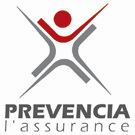A reform of the reimbursement system for health insurance in France is under way. The evolving scheme was first announced back in June 2018 and is planned for completion by 2021. Plans currently under way aim to reduce the real cost you might have to pay opticians, dentists and audiologists by introducing a full reimbursement scheme by 2021. This will apply only if you hold a ‘top-up’ (complémentaire or mutuelle) health insurance policy. You may see this reform referred to – not completely accurately – as the 100% santé reform.
Le reste à charge or what you pay for out of your own pocket
Le reste à charge is the amount that someone has to pay a health professional (think “dentist, optician and audiologist”) after your obligatory (state) health insurance and optional ‘top-up’ health insurance have contributed with their reimbursements.
Cost of glasses etc. / dental crowns etc. / hearing aids etc.
MINUS
reimbursement from obligatory state health insurance
MINUS
reimbursement from optional ‘top-up’ (complémentaire or mutuelle) health insurance
=
le reste à charge (what you need to pay out of your own pocket)
At present, this reste à charge is substantial. For a hearing aid, this can typically amount to €800 – €900 per ear. For a dental crown, this might be €200. For a pair of glasses, it might be as much as €250. Remember, these numbers are what you have to find out of your own pocket AFTER your state and your ‘top-up’ health insurances have contributed their reimbursements. It’s true that you can avoid most of these out-of-pocket expenses by taking out the highest level of complementary (‘top-up’) health insurance contracts, but not everyone opts for that degree of cover.
The current reforms aim to reduce these out of pocket expenses to zero by introducing a full reimbursement scheme – if you have complementary health insurance. Here’s how it will work.
The new health insurance reimbursement schemes in greater detail
The 100% santé reforms are being introduced in stages, as explained in the table below. As these reforms are rolled out, health professionals will be under an obligation to offer you a 100% reimbursement quote (or devis). They will present the relevant options as being in one of three categories, which they may call paniers (or baskets), as follows:
- A choice of glasses etc. / dental crowns etc. / hearing aids etc. which will come with no out-of-pocket expense (no reste à charge) to be paid by you. This will be the new panier 100% santé.
- A choice of glasses etc. / dental crowns etc. / hearing aids etc. where there will be some le reste à charge or out-of-pocket charge for you to pay, but these will have a cost ceiling applied.
- An unlimited choice, as at present, where there is no theoretical maximum price, leaving you with a larger balance to pay from your own pocket.
The second and third of these three options may attract additional reimbursement if you have a higher level of complementary health insurance. What’s new is that for all who have complementary ‘top-up’ health insurance, there will be a new range of glasses etc. / dental crowns etc. / hearing aids etc. that will attract full reimbursement. There are details within these plans, as follows:
| Categories of health product (paniers) | Opticians effective from 1st January 2020 | Dentists progressively effective during 2020 and 2021 | Audiologists effective from 2021 |
| 100 % santé options with no reste à charge | There will be a choice of 34 frames for adults and 20 for children. Lenses that meet specific standards for scratch-resistance, anti-UV, anti-glare and lens thickness are all available in this category. Prices will be legally-regulated. | Essential dental work (metal for molars) will be available, albeit capped (so to speak) at €500, with no reste à charge to pay out of your own pocket. More complex work may not be available at this level; final details are yet to be published. | A choice of hearing aids meeting aesthetic and performance criteria will be available, including both in-ear and behind-ear models. Aids will be available with up to 12 channels. There will be a choice of comfort options. Prices will be legally-regulated. |
| Capped options with some reste à charge | The choice available here will leave you with some reste à charge to pay out of your own pocket, but costs will be capped. | ||
| Uncapped options for those with deeper pockets | There are no restrictions on the choice of lenses and frames because you pay what your ‘top-up’ policy won’t cover. | There are no restrictions on the choice of dental work because you pay what your ‘top-up’ policy won’t cover. | There are no restrictions on the choice of hearing aids because you pay what your ‘top-up’ policy won’t cover. A progressive increase in the reimbursement rate for the audiology component of compulsory health insurance is planned. A maximum reimbursement of €1,700 per ear is likely to obtain for most ‘top-up’ policies. |
The take-away from all of this is that if you can afford a ‘top-up’ health insurance policy, when these reforms are fully operational you will have access to a range of health services that will be genuinely more affordable, leaving you less out of pocket than is currently the case. You can download a brochure about the ‘top-up’ health insurance that Prevencia offers from our page on this website.
A note about opticians and ophthalmologists
Remember that before you visit an optician for a new pair of glasses, you should first visit a prescribing ophthalmologist for an eye test. Opticians can give you an eye test but they will correctly tell you that you will not be eligible for social security reimbursement unless you have an ophthalmologist’s prescription. Once you have such a prescription, then you can re-visit an optician for a new pair of glasses within the following three years – and they will be able to give you a new eye test. Under these circumstances, you will remain eligible for reimbursement for any glasses that are prescribed by the optician. You may find long appointment queues for an appointment to see an ophthalmologist in France.
The information provided here is for general guidance. The exact details of your policy will define your legal and contractual obligations. What is written there will take precedence over what is written here.
Ces informations sont données à titre indicatif. Pour connaître précisément vos obligations légales ou contractuelles en relation avec votre contrat d’assurance, veuillez vous référer aux conditions générales et particulières de votre contrat.

